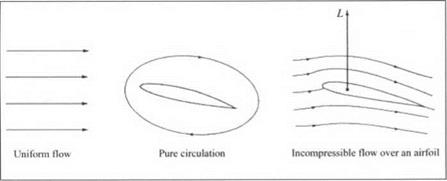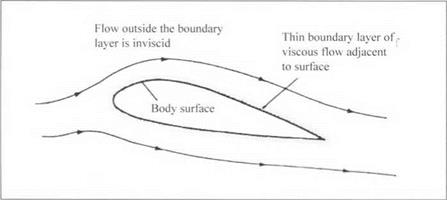STANDARDIZING AIRPORT DESIGN
Archibald Black was just one engineering consultant, and one advocate, or even a handful, does not a community of experts make. The aeronautical engineering community had begun to sprout small clusters of “experts” located in the university, industry, and the government. But with the exception of the Model Airways project of the Army, emphasis among engineers was almost entirely on airplanes.30 The powerful political currents swirling around the aviation legislation debates of this period had finally reached a consensus that the federal government had a leading role in stimulating and supporting the development of both military and civil aviation. Through the Air Commerce Act of 1926, Congress put most of the responsibility on the shoulders of the Commerce Department. With regards to airport development, Congress placed a severe handicap on the new Aeronautics Branch. The Air Commerce Act of 1926 expressly prohibited the Commerce Department from providing any financial support for airports. Yet despite having no financial resources or regulatory powers, Congress still included a specific provision in the law requiring the Commerce Department to examine and rate airports.31
Fulfillment of this obligation was not considered a burden, although without the power to mandate that all airport facilities participate in a ratings program the law lacked much punch. Still, the Aeronautics Branch was established amidst the heady intellectual fervor of “Fordism” and “mass production.” Commerce Secretary Herbert Hoover was a leading proponent of standardization in all industries so it is not surprising that department officials would place heavy emphasis on standardization as a crucial first step in transforming commercial aviation into a large scale transportation system. The Airport Rating program, one small part of a much larger regulatory program being initiated by the Department, was animated by similar standardization objectives. Airport Ratings helped ensconce airport engineers as the primary technical experts and deeply influenced the process and outcome of airport design. Thus even without the power of the purse, the Aeronautics Branch managed to become an incubator for the professionalization of airport design.32
The ratings, introduced in 1927, represented neither original nor dramatic reading. The crucial fact was that there was now a single coordinating body in the nation.33 Compliance was strictly voluntary but the Aeronautics Branch had now asserted a role in defining, what Lester Gardner called in his speech to the Fourth International Congress of Aerial Navigation in 1927, “airport excellence.”34 The new federal standards were largely identical with those of the Aeronautic Safety
Code. They included a set of basic minimum requirements for every field under consideration for a rating. The ratings scheme established borrowed the highway engineer’s “stage construction” practice meaning that they allowed for construction to proceed in “stages.”35 This helped address the fact that, because airport construction had been deemed a municipal function, individual airports were never going to be identical. As the Army had discovered, communities did not have the same financial resources or the same degree of interest. But more importantly, the air transportation companies found that 100 percent uniformity was unnecessary – air travel was clearly heavier between certain destinations for reasons independent of the quality of the airport. The primary concern for federal officials, then, was to provide a base-level of uniformity.
The ratings system was greeted warmly but ironically no airports made an application until 1930. The reason was that the system was voluntary. Austin MacDonald summed up the situation as follows: “Those responsible for the destiny of an airport are usually disinclined to accept anything less than the very highest rating issued. Rather than be branded as inferior, they are likely to defer their rating application, hoping that at some future time they will be able to meet all requirements and receive the unqualified approval of the Federal Government.”36 Still the effect of Airport Ratings was almost immediately apparent in airport design.
A stunning example was the Oakland, California, Municipal Airport which was a carbon-copy of the Commerce Department specifications. Oakland was the first major airport designed and built after the Aeronautics Branch had developed its airport ratings. Opening in 1928, in every aspect of its design – from drain tile and grass seed mixtures to hangars, lighting and hospitals, even the painted markings on the building rooftops – the Oakland airport conformed to the specifications listed in the standards for the highest airport rating. Even its physical layout was identical with the sketches of a model airport supplied along with the airport ratings. Oakland’s subsequent success as a working facility became strong testimony on behalf of the “engineered” airport. As an airport construction boom stimulated by Lindbergh’s epochal solo Atlantic crossing got underway, letters began to pour in to the Aeronautics Branch requesting advice on how to locate an airport engineer.37
Unlike the engineers who were involved in aircraft design, there was no laboratory or university environment in which the merits of different kinds of designs could be debated. There was only a very limited public discussion stimulated by the articles which appeared in various journals. When the Branch formed a special Airports Section in February 1929, one of the central functions of the new section was to become a clearing house of technical information (although there was no promise to provide any critical analysis of that information before dissemination). The ranks of airport engineers swelled and an examination of all airports built during this period clearly indicates that there was a general consensus as to what constituted “good” design versus “poor” design.38
Three factors were considered when making such judgments. First and foremost was pilot opinion coupled with the accident rate at a given field. Traffic volume was the second measure. Finally, profitability (or at least the ability to break even) was used to evaluate airport design. The consensus built around these indicators was strengthened with the establishment of professional organizations dedicated to airports. In May 1929 the Aeronautical Chamber of Commerce’s new Airport Section sponsored the first national airport meeting in Cleveland. Over three-hundred attended the Ohio meeting and another three – hundred attended the five regional conferences held in Boston, Atlanta, Los Angeles, and Bridgeport. Somewhat immodestly, though true, the Chamber concluded that “the minutes of the meeting and records of the papers read constitute a compendium of thought and experience on airport development from the best minds in the field.”39
But amidst this expanding professional interest, airport engineers suddenly became aware of a challenge to their fledgling claims of expertise. This challenge appeared not to question the engineer’s skill but rather it resulted from a renewed professional interest within the American architectural community for airports and airport design. City planners, too, began to take a vocal interest in airports. While ultimately it would be understood that airport design was sufficiently complex to require the skills of several different professionals, this was not true at the start.
Yet, airport engineers did not take long to concede publicly that there was a role for architects in the design of certain airport buildings. Philip Love of Love-Sultan, stated in a paper for the Third National Meeting of the Aeronautic Division of the American Society of Mechanical Engineers that: “At first, airport buildings were hard to treat architecturally, but a definite type of characteristic “airport” design is coming to the fore rapidly, and we are learning that sympathetic treatment of mass and color will give buildings a really pleasing appearance without exorbitant cost, and the whole industry has ascended to a plane where this is not only justified but demanded.”40 That nervous acknowledgment came at an important turning point in the next phase of airport design – the integration of architects into the community of experts that designed airports.












